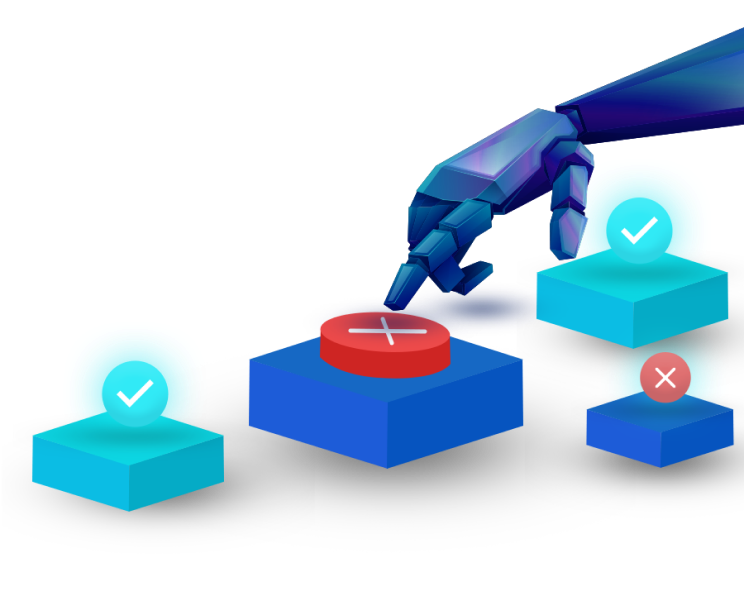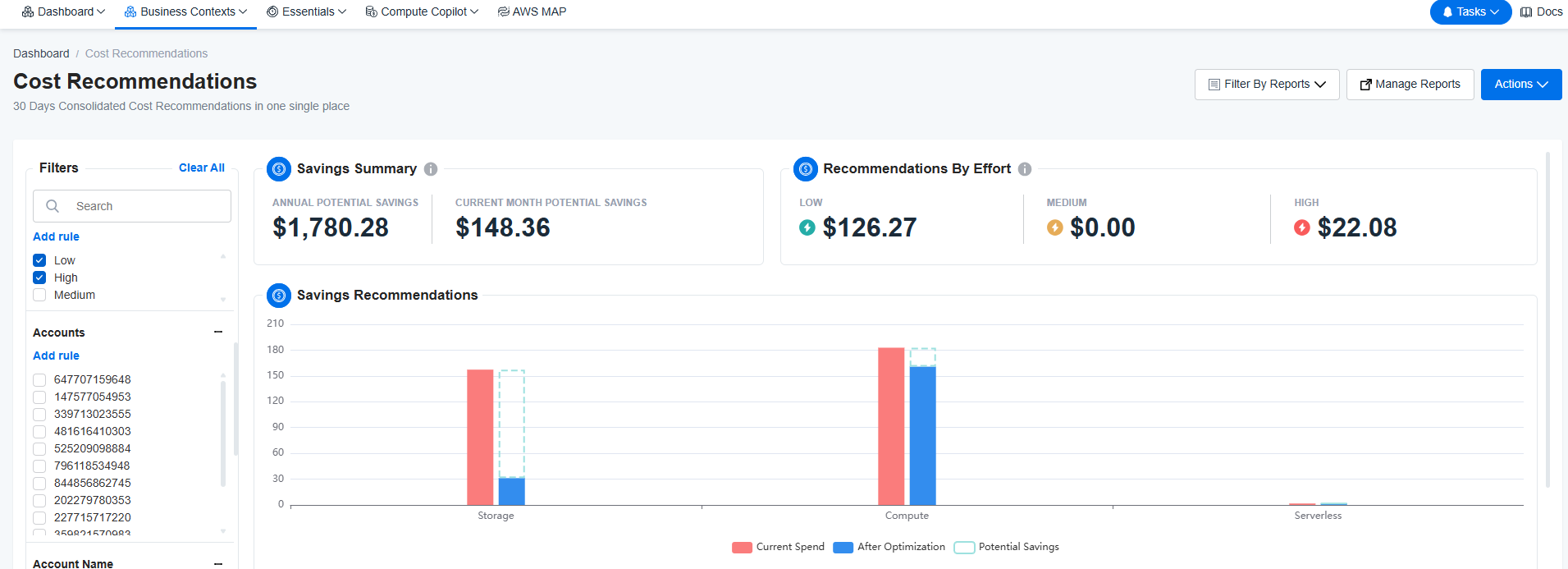- Blog
- Right Sizing
- Amazon EBS Pricing: Guide to EBS Volume Type and Pricing
Amazon EBS Pricing: Guide to EBS Volume Type and Pricing
Last Updated: May 22, 2025, Right Sizing
AWS (Amazon Web Services) Elastic Block Storage (EBS) is a scalable, high performance EC2 storage. You can use EBS to store persistent data, meaning the service will keep your data even when you terminate EC2 (Elastic Compute Cloud) Instances.
With EBS, you can create storage volumes and attach them to EC2 instances. Ideally, EBS is suitable for anyone doing extensive data analysis and anyone who runs enterprise applications. Read on to find out more about EBS storage costs.
What is Amazon EBS Pricing?
Amazon EBS (Elastic Block Store) is durable block storage for EC2, with pricing based on the volume type, size, and any provisioned performance. General purpose volumes like gp3 charge separately for storage (GB/month), IOPS, and throughput, while io1/io2 charge a premium for high-performance workloads. Snapshot storage is priced per GB in Amazon S3, and costs can increase with frequent backups or large deltas. Additional fees apply for inter-AZ data transfer and API actions like snapshot creation or volume listing.
Why Choose EBS?
Here are some of the top reasons why should choose EBS storage:
- If you are looking for a beginner-friendly, easy-to-use service, use Elastic Block Storage.
- If you are looking for a beginner-friendly, easy-to-use service, use Elastic Block Storage.
- EBS has high performance and is compatible with Elastic Compute Cloud.
- EBS is a flexible storage option where you can customize volumes according to the performance you need.
- You can mount EBS volumes to instances within one availability region.
Continuous EBS optimization

EBS Volume Types
Amazon EBS offers several volume types optimized for different performance and cost requirements.
1. General Purpose SSD (gp2 & gp3)
General Purpose SSD volumes are ideal for a wide range of workloads that need a balance of price and performance.
- gp2 automatically scales IOPS with volume size.
- gp3 decouples storage from performance, allowing you to provision IOPS and throughput independently at a lower cost.
2. Provisioned IOPS SSD (io1 & io2)
Provisioned IOPS SSD volumes are designed for mission-critical applications that demand high performance and low latency.
- You can provision up to 64,000 IOPS and 1,000 MB/s throughput per volume.
- io2 offers better durability (99.999%) compared to io1, making it ideal for critical databases.
3. Throughput Optimized HDD (st1)
Throughput Optimized HDD volumes are designed for large, sequential workloads like big data, log processing, and data warehouses.
- They offer high throughput at a lower cost than SSDs but are not ideal for small, random I/O.
- Performance scales with volume size, measured in MB/s rather than IOPS.
4. Cold HDD (sc1)
Cold HDD volumes are built for infrequently accessed data where low cost is more important than high performance.
- Best for archive storage or backup targets that are accessed occasionally.
- They provide the lowest cost per GB among the EBS volume types but have the lowest performance.
5. Magnetic (Standard)
Magnetic volumes (previously called “standard”) are the legacy EBS option for workloads with infrequent access.
- They have lower durability and performance compared to modern SSD and HDD options.
- Primarily used for archival and cold storage where upgrading to sc1 or S3 Glacier isn’t needed.
EBS Volumes Pricing
EBS volume price depends on the volume type you choose, with SSD options costing more for higher performance and HDD options offering lower-cost storage for sequential or infrequent access.
-
General Purpose SSD (gp3 and gp2) Pricing
-
gp3:
Storage: $0.08 per GB-month
IOPS: 3,000 IOPS included for free; additional IOPS at $0.005 per provisioned IOPS-month beyond the baseline.
Throughput: 125 MB/s included; additional throughput at $0.04 per MB/s-month beyond the baseline.
Use Case: Cost-efficient SSD with flexible performance scaling. -
gp2:
Storage: $0.10 per GB-month of provisioned storage.
Performance scales with volume size at 3 IOPS per GB, with a minimum of 100 IOPS and up to 16,000 IOPS.
Use Case: Older general-purpose SSD; often more expensive than gp3 for higher performance needs.
-
Provisioned IOPS SSD Pricing
-
io1 and io2:
Storage: $0.125 per GB-month
Provisioned IOPS: $0.065 per provisioned IOPS-month
Throughput (io2 Block Express only): Additional charges may apply based on configuration.
Use Case: High-performance workloads like large relational databases requiring low latency and consistent IOPS.
-
Throughput Optimized HDD (Hard Disk Drive) Pricing
-
st1:
Storage: $0.045 per GB-month
Throughput: Designed for large, sequential workloads with baseline throughput included.
Use Case: Big data, log processing, and data warehouse workloads needing high throughput at low cost.
-
Cold HDD Pricing
-
sc1:
Storage: $0.015 per GB-month
Throughput: Lower baseline throughput suited for infrequent access.
Use Case: Backup and archival storage where performance is less critical but low cost is a priority.
EBS Optimization with nOps
EBS costs often slip through the cracks — idle volumes, oversized storage, and forgotten snapshots quickly drive up your bill. nOps gives you direct visibility into all EBS volumes across your environment, making it easy to spot waste and take action. Instead of digging through manual reports or writing custom scripts, you can right-size, clean up, and optimize storage in a few clicks.
Beyond EBS, nOps provides full visibility into your entire cloud spend, helping you identify savings opportunities across compute, storage, databases, networking, and more — all from a single platform built for action, not just reporting.
nOps manages $2 billion in AWS spend, and we’re ranked 5 stars by G2 — start your nOps free trial today, or schedule a demo to learn more!
Frequently Asked Questions (FAQ)
What are EBS fees?
Beyond the basic cost per GB of storage, Amazon EBS charges additional fees you might not expect. You can incur extra costs for provisioned IOPS and throughput if you go beyond the free baseline on gp3 volumes. Snapshots stored in S3 are billed separately per GB-month. If you use Multi-Attach to connect a volume to multiple instances, cross-AZ data transfer fees apply. Detaching volumes without deleting them, or keeping snapshots indefinitely, can quietly accumulate storage fees over time.
Why is AWS EBS so expensive?
EBS is expensive because you pay for everything you provision, whether or not you actually use it. Volumes are billed by size, not usage — even half-empty disks cost the same as full ones. If you over-provision IOPS, leave idle volumes running, or let snapshots pile up, your AWS EBS storage cost grows fast. Performance tiers like io2 and add-ons like Multi-Attach drive up costs even more. While EBS offers durability and replication, many workloads don’t need that level of resilience — so without active management, you end up paying premium prices for benefits you might not fully use.
What is the cheapest EBS volume type?
The cheapest EBS volume type is sc1 (Cold HDD), at about $0.015/GB-month. It’s designed for workloads you barely touch — backups, long-term archives, or data you access once in a blue moon. It’s cheap but slow for anything performance-sensitive. If you need active block storage and still want to save money, gp3 volumes offer the best balance: lower base pricing than older gp2 volumes, and you only pay extra if you manually crank up IOPS or throughput beyond the free baseline.
How much does EBS vs EFS cost?
EBS charges you based on how much space you provision — whether you use it or not. EFS charges you for how much space you actually use, but it’s much more expensive per GB. At around $0.08/GB-month (gp3) vs $0.30/GB-month (EFS Standard), EBS is cheaper for most direct-attach storage needs. EFS only makes sense when you need shared, elastic file storage across multiple instances. For predictable workloads, EBS is far cheaper; for dynamic access patterns, EFS may be worth the higher price.







